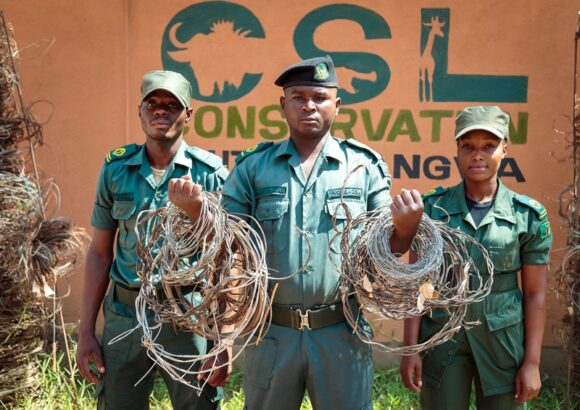Wildlife rescue, rehabilitation, and release plays a crucial role in wildlife conservation. These efforts provide a lifeline for animals that have been injured, orphaned, or displaced, offering them the chance to recover and return to the wild. We proudly support our partners in their dedicated work to rescue and rehabilitate animals, ensuring they receive the care they need to thrive in their natural habitats.
Rescue, Rehabilitation, and Release: Giving Wildlife a Second Chance
Supporting Wildlife Rescues
Our support extends to several key projects focused on rescuing vulnerable species, from working with Conservation South Luangwa’s wildlife rescue vet team, to supporting Orangutan Foundation’s work in Lamandau Wildlife Reserve, a critical habitat for rescued orangutans. Here are some examples:
- Animals Asia: We partnered with Animals Asia to support their mission to rescue bears from the horrific bile farming industry. These bears, often traumatised and in poor health, are brought to sanctuaries where they receive veterinary care, proper nutrition, and the opportunity to recover. While some bears may not be suitable for release due to their prolonged captivity, those that can be are carefully rehabilitated and prepared for life back in the wild.
- Sun Bear Project: Sun bears, the smallest of the bear species, face numerous threats from habitat loss, poaching, and the illegal pet trade. Through our support of the Sun Bear Project, we helped fund tracking devices for rehabilitated bears ready for soft release. The project focuses on rehabilitating the bears, restoring their physical and psychological health, and, where possible, releasing them back into their natural environment.
- Pangolin Rescue in South Africa: Pangolins are the most trafficked mammals in the world, often rescued from illegal wildlife trade networks. In South Africa, we supported an initiative that rescued pangolins from dire situations, provided medical care, and rehabilitated them with the ultimate goal of releasing them back into the wild. These efforts are vital to protecting pangolin populations and ensuring their survival.
The Importance of Rehabilitation and Release
Rehabilitation is a complex and careful process that involves addressing the physical and psychological needs of rescued animals. For many, this is the first step toward regaining their strength and natural behaviours after enduring trauma or injury. The ultimate goal is to release these animals back into their natural habitats, where they can once again live freely and contribute to the ecosystem.
However, release is not always possible. In cases where animals cannot be safely returned to the wild, our partners provide long-term care in sanctuaries that offer a life as close to natural as possible. Whether through release or permanent sanctuary care, these efforts are critical for giving wildlife a second chance.
A Commitment to Wildlife Welfare
Our commitment to supporting rescue, rehabilitation, and release reflects our broader mission to protect and preserve wildlife. By working with expert partners, we help ensure that animals receive the care they need and that those who can be returned to the wild are given that opportunity. Together, we are making a difference in the lives of individual animals and contributing to the conservation of species at risk.






